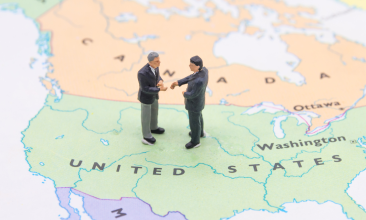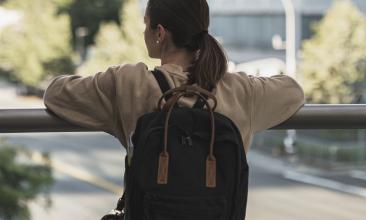For newcomers, with or without in/visible disabilities, linguistic and cultural barriers can complicate access to services. They may find it challenging to seek help, relying instead on their community and social circle rather than government services. Furthermore, they might receive wrong and out-of-date information from their networks and feel overwhelmed by bureaucracy.
Settlement services should improve their understanding of the needs of newcomers with disabilities and become more familiar with the resources available to assist them.
Different Models of Disability
Disability can be viewed in several ways:
- The medical model sees disability as a physical or mental impairment, with the challenges faced by people with disabilities being a direct consequence of their individual impairment.
- The social model identifies disability as a failure of the social environment to accommodate differences. The challenges and solutions for people living with disabilities are thus seen as social, political, and economic.
- The human rights model affirms the same rights for people with disabilities as for anyone else, adopting a multidimensional approach that acknowledges people with disabilities may also have intersecting identities.
What is a Barrier?
Many types of barriers can limit people’s ability to navigate public spaces:
- Attitudinal barriers (behavioral and belief-related)
- Informational or communication barriers
- Technological barriers
- Architectural and physical barriers
- Organizational barriers
Legislative and Legal Tools
Canadian law guarantees equal rights for all people and ensures fair opportunities for people with disabilities based on principles like participation, inclusion, non-discrimination, accessibility, and the duty to accommodate.
Here are the international, national, and provincial legislative frameworks applicable in Ontario:
- The United Nations Convention on the Rights of Persons with Disabilities (CRPD)
- The Canadian Charter of Rights and Freedoms
- The Canadian Human Rights Act
- The Accessible Canada Act
- The Ontario Human Rights Code (OHRC)
- The Accessibility for Ontarians with Disabilities Act (AODA)
What is Accessibility?
Accessibility refers to the ability of a person to access programs, goods, and/or services at any time, focusing on eliminating barriers that prevent the full participation of people with disabilities in society.
Both the Ontario Human Rights Code and the Canadian Human Rights Act mandate the duty to accommodate.
What is the Duty to Accommodate?
The duty to accommodate involves modifying rules, practices, or environments to enable people with disabilities to fully participate in society. These adjustments are generally implemented after a person has pointed out an accessibility barrier in his or her environment.
Forms of Accommodation
Many accommodations can be implemented easily and at low cost. Examples include:
- Flexible working hours or break times.
- Provision of reading material in alternative formats (digital text, braille, or large print).
- Sign language interpreters or real-time captioning services for D/deaf, deafened, or hard of hearing people to participate in meetings.
- Automatic entrance doors and accessible, gender-neutral restrooms.
- Various ways to contact a service, including by phone (including TTY), in person, and by mail.
- Comfortable seating areas.
General Tips
Understanding the challenges faced by immigrants and refugees with disabilities can be difficult without knowing the specific disability, their life experiences, and how their family and culture perceive disability.
Here are some tips for facilitating interactions with people with disabilities:
- Ask questions
- Seek permission
- Communicate clearly
- Show courtesy, patience, politeness, and respect
Settlement sector staff should provide comprehensive and compassionate services to newcomers with disabilities and their families. This involves a thorough assessment of needs, prioritizing services, and planning for future needs to make them more accessible. Organizations should have a plan for referring these people to specialized services while understanding how each step affects outcomes.
What You Can Do
- Awareness: Immigrant and refugee people with disabilities might find it challenging to travel to your organization. Consider offering home visits, especially for those isolated in rural areas.
- Welcoming Spaces: Create an atmosphere where those seeking services feel comfortable. Do not assume what they can or cannot do. Build trust to understand their needs, even if disclosing information about their disability may be difficult.
- Partnerships and Networking: Connect with people with disabilities, service providers, and advocacy groups in your community.
- Advocacy and Reforms: Your organizations can advocate with immigrant and refugee people with disabilities for policy, procedure, and protocol reforms.
- Support for Self-Advocacy: Assist immigrants and refugees with disabilities in taking control of their lives by providing necessary information.
Protocol for Supporting Immigrants and Refugees with In/visible Disabilities
OCASI's Accessibility Initiative has developed a six-step protocol model to support immigrants and refugees with in/visible disabilities. This model can be reused and adapted to your context.
Steps 1, 2, and 3 of the protocol support any immigrant and refugee individuals arriving in Canada, while steps 4, 5, and 6 specifically address the realities and needs of those with visible/invisible disabilities and their families.
- Support with registration and application for government social aid and conditions.
- Obtaining a medical assessment.
- Setting up healthcare.
- Establishing everyday life supports.
- Setting up accessible housing.
- Income, education, and job search
*For more details, please email access@ocasi.org

